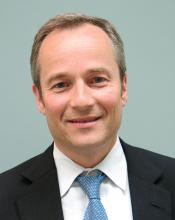DALLAS – One year after patients underwent treatment of basal cell carcinoma (BCC) with the 1064-nm Nd:YAG laser, no recurrences have occurred, according to early results from a study being conducted at two centers.
“ Arisa E. Ortiz, MD, said at the annual conference of the American Society for Laser Medicine and Surgery. “Clearance rates are comparable to or better than other topical modalities such as electrodesiccation and curettage and topical imiquimod. It’s a reasonable alternative for treatment patients with multiple tumors or those who are poor surgical candidates.”
In a recent multicenter study of 33 patients with biopsy‐proven BCCs that did not meet the criteria for Mohs surgery, she and her colleagues showed 90% histologic clearance at 1 month with one 1064-nm Nd:YAG laser treatment (Lasers Surg Med. 2018 Feb 13. doi: 10.1002/lsm.22803). “However, we had to do standard excision at 4 weeks in order to look at the histology, so we didn’t have any long-term data,” said Dr. Ortiz, director of laser and cosmetic dermatology at the University of California, San Diego. “Currently we’re looking at the long-term efficacy of these treatments.”In an ongoing study, she and Mathew M. Avram, MD, director of the Massachusetts General Hospital Dermatology Laser & Cosmetic Center, Boston, have treated 19 superficial, nodular, and pigmented BCC tumors in 11 patients 31-85 years of age. Tumor sizes ranged from 3 mm x 3 mm to 21 mm x 11 mm. Indications for laser treatment have included being a poor surgical candidate (one patient had a history of bleeding complications), having multiple tumors (one patient had Curry-Jones syndrome) – or simply wishing to not undergo surgery. “They didn’t want a surgical scar, or they didn’t want to limit their activity after surgery,” Dr. Ortiz said.
Patients underwent one 1064-nm Nd:YAG laser treatment. The anesthesia was 0.5% lidocaine with no epinephrine. Treatment settings were a 5-mm spot size delivered at a fluence of 140 J/cm2 in a pulse duration of 7-8 milliseconds. The number of pulses ranged from 14 to 36. The immediate endpoint was slight graying and slight contraction. “When you’re using the 1064-nm Nd:YAG for cosmetic purposes, you don’t want to see these endpoints, but we are treating skin cancer, so you do want to see some contraction and graying,” she said. The procedure was covered under insurance and billed as malignant destruction (CPT codes 17260-17266 and 17280-17283).
Dr. Ortiz reported that there have been no recurrences in the 11 patients at 1-year follow-up as determined by clinical observation. “There are many advantages to laser treatment of basal cell carcinoma,” she concluded. “There’s only one treatment visit, so you don’t have to come back for suture removal, and it’s a very quick treatment. There’s no significant downtime or limitation on activities, and there’s minimal wound care – just ointment and a Band-Aid – and relatively decreased risk for complications such as infection or bleeding, and minimal to no scar.”
During a separate presentation, Dr. Avram discussed how this approach to treating BCC can be translated to nondermatologic cutaneous malignancies. For example, he said that Steven M. Zeitels, MD, chief of the center for laryngeal surgery & voice rehabilitation at Massachusetts General Hospital, has been treating vocal cord dysplasia and cancers for more than 10 years with vascular pulsed dye lasers and KTP lasers. “It restores voices while sparing vocal cord tissue without radiotherapy or traditional surgery, which can permanently damage vocal cord quality,” said Dr. Avram, who is also the current president of the ASLMS.


